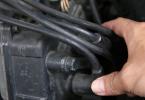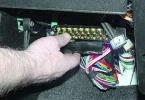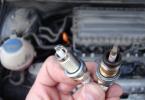Everyone knows that the shock absorber softens the blows when driving irregularities. In fact, his role in the automotive suspension is somewhat more specific - it is a damper, it prevents the car's swing at the occasion of obstacles. Today I will study its typical design, and at the same time change the front pair of "Amorth" on Chevrolet Lanos. Now you will know why they take relatively considerable money for such a seemingly simple manipulation.
Why do you need a shock absorber?
The beginning of the "separated flies from the kitlet", that is, we will understand the roles of different elements of the suspension. On most modern passenger cars, the main elastic elements are springs. 30-40 years ago, this role, mainly, was performed by the springs, working "part-time" and dampers. The oscillations were successfully quenched by friction between the sheets of spring. In detail to concern the flaws of the springs and their typical problems, we will not devote a separate material, and now we will simply remember about their existence and return to the springs.
They are installed between the suspension and the body of the car and are designed to quench the blows on the body coming from the road. When the wheel rolls on some obstacle, the spring is compressed, and the body is only slightly moved smoothly, the wheel rolls off the obstacle - the spring is straightened.
There is, however, one unpleasant moment. Take for example a toy pitch - a rubber ball, which can also be attributed to elastic items. Hit it about the ground and check out the time until it completely stop jumping. You will also jump your car, if there will be only levers in the design of its suspension. And, depending on the rigidity of the springs, the suspension will be either stone or soft, like cotton, but in the same case about the car charter can not even remember. The most terrible for such suspension is resonance, when entering into which oscillations can destroy individual elements of the suspension and its fasteners.
The problem was solved by the introduction of a shock absorber suspension into the design - an element that allowed to move the wheel relative to the body, but excluded the routing of the car. Initially, it was lever-type shock absorbers, which, like springs, performed their function due to friction. But we will not stop on anachronises, consider only modern designs. At the moment, Mainstream for passenger cars is telescopic hydraulic shock absorbers. Pneumatic and hydropneumatic systems, as well as shock absorbers of variable stiffness this time we will not take - these are themes for individual articles.
Work telescopic shock absorber
If you simplify as much as possible, then you can describe the operation of the shock absorber: there is a cylinder filled with oil, the rod with the piston is moved inside the cylinder. This piston has valves that are open only in one direction.
When the piston moves down, one valves are opened and the liquid is passed into the cavity above the piston, if the piston moves up, other valves open, and the liquid flows into the cavity under the piston. Calculation of oscillations occurs due to the fact that the oil is not compressed and has a certain viscosity.
By the way, why do you need valves generally? Maybe it would be enough holes? In fact, not enough. One of the important characteristics of the shock absorber is its magnitude of stiffness to the post and compression. In other words, it is resistance to the shock absorber stem when pressed or pulling out of the housing. Valves are needed to adjust this rigidity.
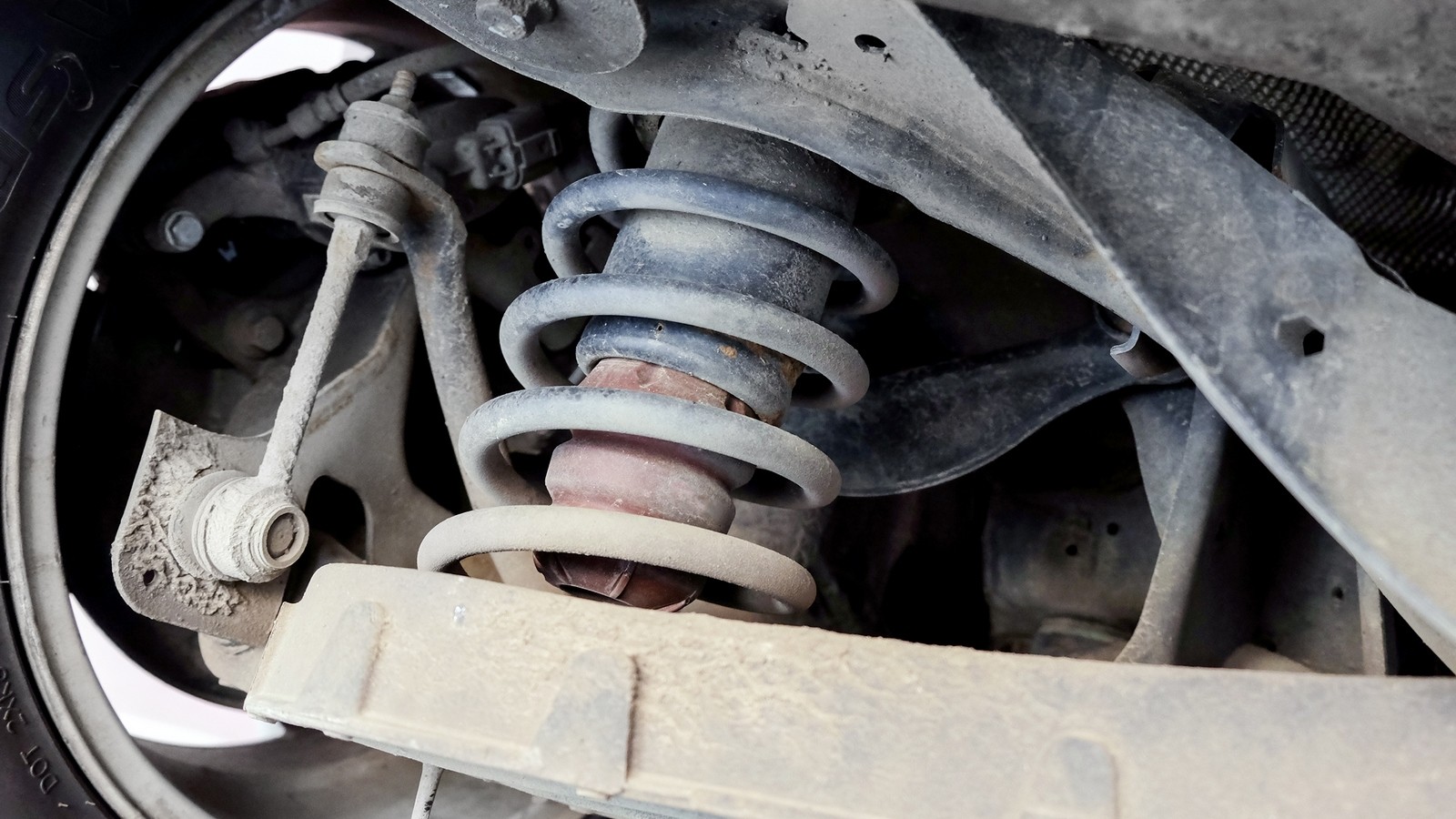
Due to the different bandwidth characteristics of the valves, press the shock absorber rod is a little easier than pulling it out of the shock absorber. This is done with the expectation that when driving on the obstacle, it is necessary not to interfere with the wheel move up to exclude the transmission of the shock from the wheel on the body. Valves in this case skip more oil. But if there is a big pit on the way, then the wheel should be done in the "fit" condition, why hurry to fall into it? Therefore, the valves on the "dissolution" of the shock absorber passes less oil.
Once again: the valves are needed to set a certain stiffness of the shock absorber in different directions of its operation.
Types of structures
Structurally, the shock absorbers can be divided into three main types: two-pipe, two-pipe with a gas subproof and a single-tube with a gas retort. Two-pipe hydraulic shock absorbers appeared first on cars. In them, as follows from the name, there are two pipes - cavities, in one of them (internal) there is a piston with the aforementioned valves, the other (outdoor) is necessary to compensate for the volume of oil - it is filled with oil only partially, the rest is air.
During the shock absorber, the oil inside heats up to high temperatures, and it is expanding, and so that the rod seals does not squeeze, the liquid flows into the outer cavity.
The advantages of this type of shock absorbers are a bit: low cost and small effect on their work from dents on the housing. It is also worth mentioning the good smoothness of the stroke of the car and the relatively small rigidity of such shock absorbers.
The disadvantages include overheating of the working fluid, as the housing is double, and the cooling of atmospheric air is difficult. Because of overheating, the likelihood of oil foaming is large and, as a result, an instant loss of performance efficiency - the shock absorber ceases to perform its function, and the car becomes poorly controlled due to the swing.
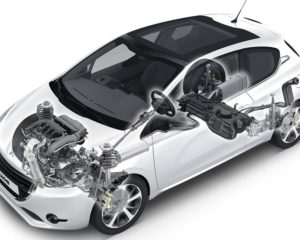
Articles / History
Softness and stiffness suspension - What is more important for comfort?
Suspension specialists can tell a lot of interesting examples from practice, and I will have to limit ourselves to a brief story about why it is not always tougher charter, but not always ...
56939 0 37 05.03.2015
The next minus is a large weight of a two-pipe shock absorber, as well as a strictly defined location during installation - if it is turned over, the working fluid flows. The weight of the shock absorber affects the magnitude of the unsavory mass (about what it is, we will tell separately). The larger the unsavory, the worse the smoothness of the stroke and the car handling.
A small improvement in the two-pipe shock absorbers was the filling of the outer gas cavity with a small excess pressure. Thus reduced the likelihood of foaming, as oil in this case "relies" to the gas pillow.
Other business - hydraulic single-tube gas-filled shock absorbers. One cylinder filled with oil, piston with one-sided valves and a small cavity filled with gas and covered by the piston.
A single-tube shock absorber is deprived of all disadvantages of two-pipe. With intensive work, the fluid does not overheat, as it is separated from the environment with only one wall of the cylinder and well cooled. It is also easier and can be installed at least up, at least down the case.
But the laws of nature are not going anywhere: somewhere they win, somewhere lose. Therefore, the advantages of two-pipe shock absorbers became shortcomings of one-tube. The latter is much more expensive and very more sensitive to mechanical damage to the hull, it became possible to use the car with them not so much, but more expensive.
Installation of shock absorbers
Methods for installing shock absorbers have not changed since their introduction to cars. So, always their upper part is attached to the body of a car or frame, and the bottom - to the suspension element, be it lever or the beam of the continuous bridge. From this and the replacement of this element in the overwhelming majority of cases did not cause difficulties: unscrew the lower bolt of the attachment, unscrew the upper bolt of fastening, and everything, the shock absorber in the hands.
With the shock absorbers of the rear suspension so everything is left, but with the front, everything is more complicated. With the advent of the front-wheel drive vehicles, the question arose where to give a shock absorber, which was mainly fastened to the lower lever of the front suspension and interfered with the installation of the drive shaft.
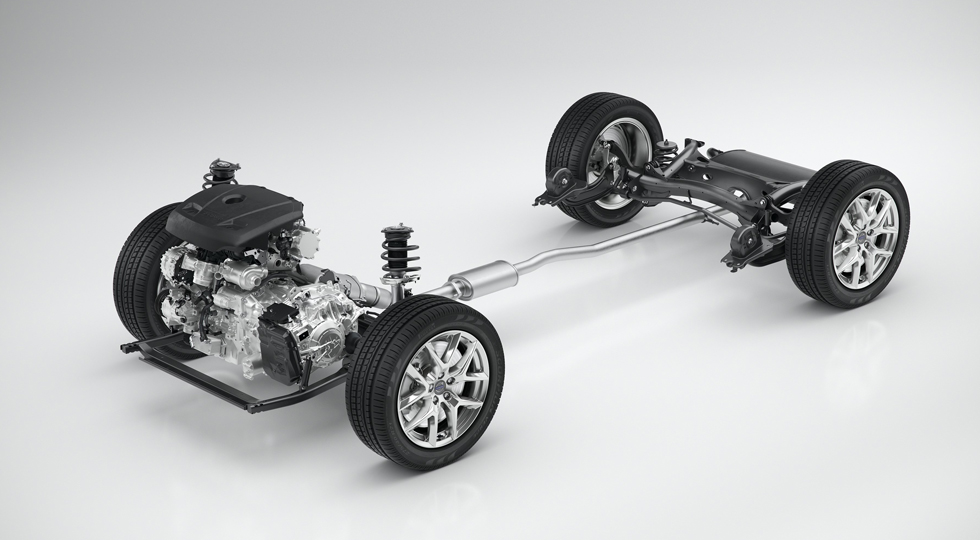
The main solutions of this task turned out two. The first option is to install the bottom of the shock absorber on the lever through the P-shaped bracket, inside of which the drive shaft was passed. The second option is the transfer of the shock absorber together with the spring into the space above the top lever of the suspension. In this case, the lower part of the shock absorber is attached to the top lever of the suspension, and is called all this design with the name of the American Erla engineer MacPherson.
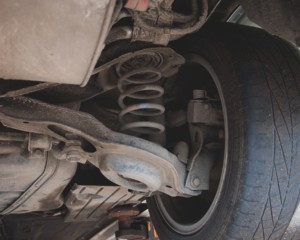
Articles / Practice
Silent blocks of automotive suspension: how they are arranged and how to change them
About the role in the suspension like any hinge, the rubberometallic connection performs two main functions. First, it gives a certain (in our case - very strongly limited) freedom of movement of parts relative ...
53547 1 0 18.08.2016
MacPherson developed this fundamentally new suspension view for the Chevrolet Cadet ultrasound concept in the 1930s. In practice, he managed to apply only after the war, already at Ford Vedette 1948 for the French market. Now that you know this short exciting history and may if you shine with erudition, we turn to the peculiarities of this popular structure.
MacPherson combined the shock absorber along with the spring into one amortized rack. In this rack, the upper part has a hinge with a bearing and relies on the body element - a glass. Thanks to the support bearing, the rack can rotate around its own axis. And if you install a shock absorbing rack at a certain angle, you can set the trajectory of moving the wheel and the angles of its installation, such as the collapse, the angle of the longitudinal and transverse inclination of the turn axis (which is, be sure to consider in future publications).
It turned out that with such an installation, the rack can be eliminated from the guide top lever of the suspension, thereby driving it. The swivel fist is mounted in the suspension to the ball support of the lower lever and to the amortized rack, rotates with it. The rack of the transverse stability stabilizer in this case can be mounted or to the lower lever, or directly to the amortized rack.
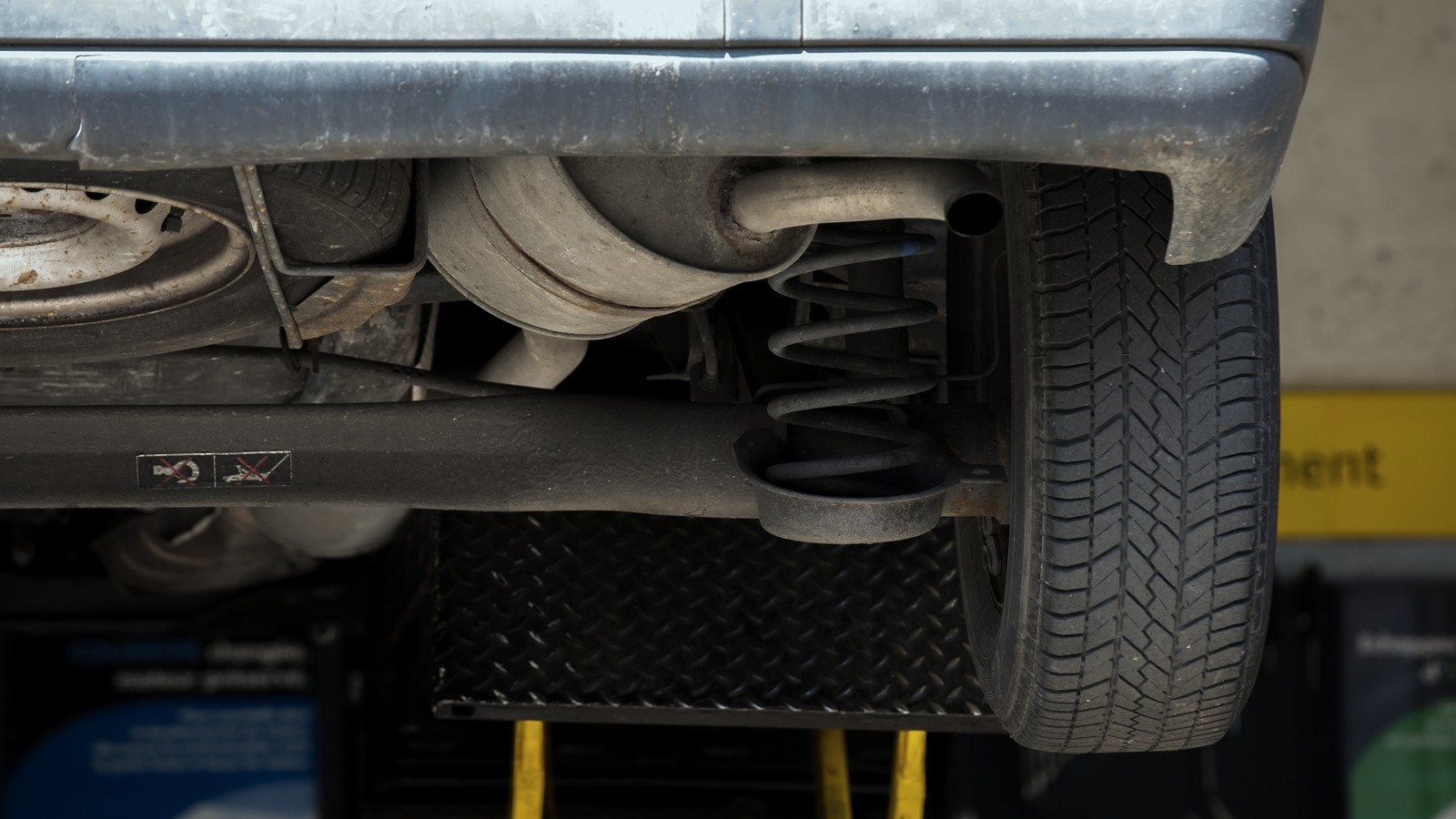
If we consider ways to fasten the rack to the twilty fist, then there are several of them. The swivel fist can be attached to the bracket on the rack housing. Often - two eccentric bolts with nuts, and they are elements of adjusting wheel collapse. If the collapse of the wheels is laid constructively, the adjustment is not needed, it means that the rack can be fixed in the turning bracket. The mounting bracket in this version is an eye-cut, which is tightened with one bolt. The simplest option is to press the rack housing into the swivel fist (like our experimental Chevrolet Lanos). It comes all this often as one detail - assembled with a fist.
The list of disadvantages of the McPherson shock absorber type can be attributed relatively small moves of the suspension and, as a result, this design is a big rarity, if not an exception, on real SUVs (however, there are almost no such machines). And the reason is that with the maximum compression of the spring spring, the angles of the wheel installation are very strongly, which entails a serious deterioration in the controllability of the car and leads to excessive wear of the tires.
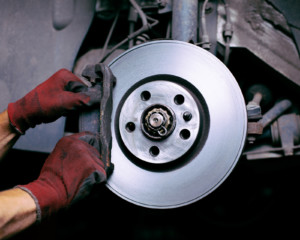
Articles / Practice
Disc brakes: typical breakdowns and repair
Just in case, it is running the main ones by brakes in the car. On most modern machines, disk brake mechanisms are used, which controls the hydraulic drive. We will tell about the drums ...
51271 2 26 10.08.2016
Shock absorbing racks may be with the possibility of replacing the shock absorber and without it. In the first embodiment, the rack housing with a support for the spring is made separately from the shock absorber. In the second - the hull of the shock absorber is simultaneously the rack housing, and the lower support of the spring is mounted directly on it. The upper springs support is attached to the shock absorber. Spring on top and bottom affects support through rubber pillows. On the shock absorber stock, the elastic bumps is set - a rubber or polyurethane sleeve, which prevents the suspension parts to be powdered with full compression of the spring.
The spring in the amortized rack is always under tension. Initially, compression is necessary to eliminate the backlats and gaps in the assembly. Replacing the rack by car - always a little joy for the mechanic, as it is rather notes in the cost of work.
Example of replacing shock absorbers
So, we turn to the remandon, where the Chevrolet Lanos is waiting for us with its front folding depreciation racks. Springs We leave old, but shock absorbers - change. The owner of the car decided that the standard two-pipe front suspension shock absorbers were too soft, and he lacks manageability. The solution was the installation of front single-pipe gas-filled shock absorbers.
Start. Overturbation of the machine mounting the drive shaft to the wheel of the wheel, after which you unscrew the fastening bolts and remove the front wheel. Further, to facilitate the unscrewing of the fastening elements, spray on the connections of the ball support lever and the hinge of the tip of the steering thrust the Saving WD40.
1 / 4
2 / 4
3 / 4
4 / 4
Removed pin and turned the battlefield nut to the twilty fist. They released, but did not turn away completely nut the fastening of the transverse stability stabilizer to the stabilizer rack (which is on the lever). After the connection under the influence of WD40 is slightly flush, turned off the tip of the tip of the steering thrust to the eye on the amortized rack.
To hit the thumb with a hammer in no case, so it will take a universal puller here - with it, disconnect the tip hinge. Since it is necessary to remove the shock absorbing rack assembly with the swivel fist and the brake disc, then you need to remove the brake caliper. Operation The simplest: twisted the upper and lower guide bolts and dismantled the caliper. At the same time, the state of the brake pads was inspected (everything is in order with them). By the way, even disconnect the brake hose from the caliper is not needed.
1 / 6
2 / 6
3 / 6
4 / 6
5 / 6
6 / 6
Next, disconnect the bottom lever of the suspension from the swivel fist. We have no problems with this, but in the event of zaku, the connection is recommended to use a universal puller. With a slightly pulling the rack (its top mount allows it to do it), remove the drive shaft from the wheel hub. At the same time, it is necessary to be very careful not to damage the boot of the shaft shrus.
Move from a wheel niche into a motor compartment. Here we turn off the nut mounting nuts to the body cup. There are no problems too. The only edification: hold the rack, as turning out these nuts, you remove the last mount connecting the support of the rack with the car.
1 / 3
